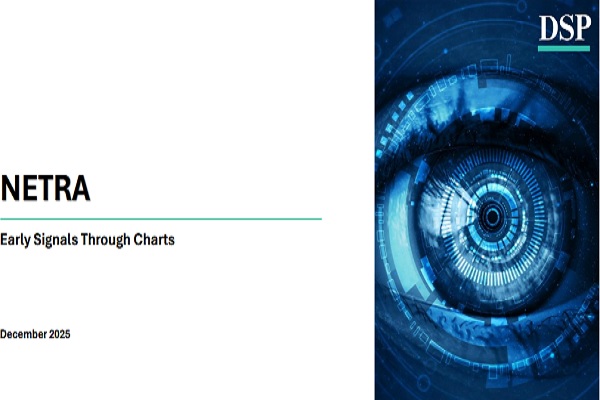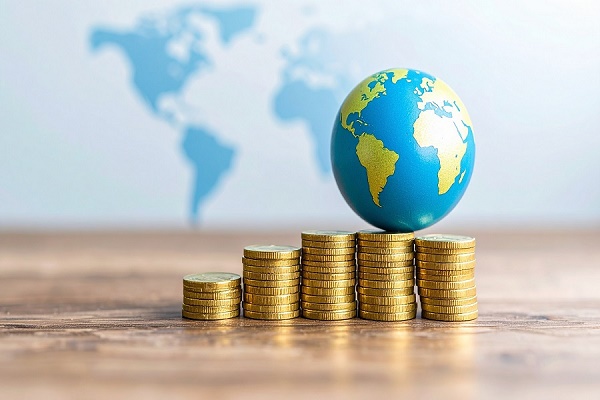Gold trading range for the day is 75275-77065 - Kedia Advisory

Gold
Gold prices declined by -0.13% to settle at ?76,143 as a stronger-than-expected U.S. jobs report bolstered the U.S. dollar and reduced market expectations for aggressive rate cuts from the Federal Reserve. The U.S. job market showed resilience in September, with job growth accelerating and the unemployment rate falling to 4.1%. This reduced the likelihood of a 50-basis-point rate cut in the Fed's upcoming November policy meeting, with trader expectations for such a cut dropping from 28% to 11% following the payrolls data release. On the global demand front, central banks reported net purchases in August that were lower than recent trends, likely due to high bullion prices. However, the absence of significant selling suggests that sovereign buying is temporarily on hold rather than ending. In China, gold sales surged during the National Day holiday, with local retailers seeing increased foot traffic. In contrast, India saw only a slight improvement in demand ahead of the festive season, hindered by record-high prices. Indian dealers offered discounts of up to $21 an ounce, and jewelers were cautious about restocking amid uncertain demand. Technically, the market experienced long liquidation, with open interest falling by 2.08% to settle at 16,309 contracts. Gold prices dipped by ?101, signaling a pullback. The support level is currently at ?75,710, with a potential test of ?75,275 if breached. On the upside, resistance is expected at ?76,605, and a move above could see prices testing ?77,065.
Trading Ideas:
* Gold trading range for the day is 75275-77065.
* Gold prices slipped after a stronger-than-expected U.S. jobs report boosted the dollar
* Central bank gold demand moderates in August as high prices delay purchases – WGC
* Gold demand in India improved slightly due to an upcoming festival but remained lower than usual.
Silver
Silver prices rose by 0.4% to settle at ?93,349 as ongoing concerns about the Middle East conflict supported safe-haven demand. Despite the dollar index strengthening by more than 0.5% to reach its highest level since mid-August, following a stronger-than-expected U.S. jobs report, silver held firm. The U.S. economy added 254,000 jobs in September 2024, surpassing the forecast of 140,000 and marking the strongest job growth in six months. Additionally, average hourly earnings increased by 0.4%, higher than anticipated. These positive data points suggest a less aggressive rate-cutting stance by the Federal Reserve, reducing the chances of a large interest-rate cut in the near future. Meanwhile, silver demand in India, the world's largest silver consumer, continues to rise, driven by the solar panel and electronics industries. India’s silver imports are on track to nearly double this year, with 4,554 tons imported in the first half of 2024 compared to just 560 tons a year ago. The surge in imports is due to depleted inventories in 2023 and stockpiling by industrial buyers as a hedge against rising prices. This heightened demand in India is expected to provide further support to global silver prices, which are already near their highest levels in over a decade. From a technical perspective, the silver market is witnessing fresh buying, with open interest increasing by 3.45% to settle at 25,770 contracts. Silver prices are seeing support at ?91,590, with the potential to test ?89,830 levels if breached. On the upside, resistance is now at ?95,250, and a move above could see prices testing ?97,150.
Trading Ideas:
* Silver trading range for the day is 89830-97150.
* Silver rose as persisting worries about Middle East tensions kept supporting prices.
* Stronger-than-expected US jobs report that reduced the likelihood of a large interest-rate cut by the Fed next month.
* Nonfarm payrolls rose by 254,000 in September, surpassing expectations, while the previous two months saw an upward revision of 72,000 jobs.
Crude oil
Crude oil prices surged by 2.89% to settle at ?6,339, as fears of a wider Middle East conflict raised concerns about potential disruptions in global crude supplies. The escalation followed U.S. President Joe Biden’s statement regarding discussions on an Israeli attack on Iranian oil facilities, sparking worries that Israel might target Iranian oil infrastructure. This could provoke retaliation from Iran, exacerbating tensions in the oil market. Although global crude supplies have not yet been impacted, the possibility of disruption continues to fuel investor concerns. Meanwhile, OPEC+ assured the market that it has enough spare capacity to offset any potential loss of Iranian supply. Kazakhstan's announcement of its largest oil-output cuts in October, due to scheduled maintenance at the Kashagan field, also contributed to tightening supply fears. Additionally, U.S. crude oil inventories unexpectedly rose by 3.889 million barrels, surpassing expectations of a 1.3 million barrel decline. Crude stocks at Cushing, Oklahoma, increased by 0.840 million barrels, while gasoline inventories rose by 1.119 million barrels, further deviating from forecasts. Meanwhile, China's crude oil imports in August fell by 7% year-on-year, although they were up from the previous month. Technically, crude oil is witnessing short covering, as open interest fell by 0.65% to settle at 14,564 contracts. Prices are currently supported at ?6,224, and a drop below this level could test ?6,109. On the upside, resistance is now seen at ?6,407, with further upward movement potentially testing ?6,475.
Trading Ideas:
* Crudeoil trading range for the day is 6109-6475.
* Crude oil prices rose as investors feared a wider Middle East conflict could disrupt crude flows.
* On the demand side, signs of a strong US economy have supported expectations for fuel demand.
* Libya’s oil production has resumed across all oilfields and export terminals, reinforcing the case for ample supply.
Natural gas
Natural gas prices dropped by 3.57% to settle at ?240.3, driven by a weaker demand outlook despite a smaller-than-expected storage injection reported by U.S. utilities. Concerns over potential disruptions in U.S. natural gas production eased as tropical storms shifted away from the Gulf of Mexico. According to Baker Hughes, the number of rigs drilling for natural gas in the U.S. increased by 3 to 102, indicating steady production activity. Storage injections in recent months have been at record lows, and gas output in the Lower 48 U.S. states averaged 101.0 billion cubic feet per day (bcfd) in October, down from 101.8 bcfd in September, which is still lower than the record of 105.5 bcfd in December 2023. The U.S. Energy Information Administration (EIA) forecasts a decline in U.S. natural gas production to 103.4 bcfd in 2024, compared to 103.8 bcfd in 2023. However, demand is expected to reach record highs, rising from 89.1 bcfd in 2023 to 89.9 bcfd in 2024. In addition, U.S. utilities added 55 billion cubic feet (bcf) of gas into storage in the week ending September 27, below expectations of 57 bcf. This brought total stockpiles to 3,547 bcf, which is 127 bcf higher than last year and 190 bcf above the five-year average. Technically, natural gas is under fresh selling pressure as open interest surged by 23.07% to settle at 25,374 contracts. Prices are supported at ?235, with a further drop possibly testing ?229.8, while resistance is now seen at ?249.7, and a move above could push prices to ?259.2.
Trading Ideas:
* Naturalgas trading range for the day is 229.8-259.2.
* Natural gas dropped on weaker demand outlook even utilities added a smaller-than-normal amount.
* The outlook for tropical storms to move away from the Gulf of Mexico, easing concern about a disruption.
* The number of rigs drilling for natural gas in US rose by 3 this week to 102.
Copper
Copper prices rose by 0.32% to settle at ?855.35, supported by optimism about a potential recovery in demand following China’s recent stimulus measures. In September, China implemented several policies aimed at boosting economic growth, including cutting interest rates, injecting liquidity into banks, and easing home purchase restrictions. These moves raised hopes for increased industrial activity and, consequently, higher copper demand. Despite these positive signs, copper inventories in warehouses tracked by the Shanghai Futures Exchange (SHFE) increased to 141,625 tons by the end of September, marking the first rise since July. This followed a period of steady inventory declines, reflecting the weaker demand over the past few months. The global refined copper market recorded a surplus of 91,000 metric tons in July, according to the International Copper Study Group (ICSG). This was down from June's surplus of 113,000 metric tons, but overall, for the first seven months of 2024, the market was in a substantial surplus of 527,000 metric tons. China's unwrought copper imports in August fell to a 16-month low, totaling 415,000 metric tons, down 12.3% year-on-year, driven by weaker demand. Technically, copper is in a phase of fresh buying, as open interest increased by 3.46%, indicating renewed market interest. Copper prices are receiving support at ?850.4, with a potential test of ?845.5 if pressure persists. On the upside, resistance is seen at ?860.2, and a break above this level could push prices to ?865.1.
Trading Ideas:
* Copper trading range for the day is 845.5-865.1.
* Copper gained on hopes of a rebound in demand after China's stimulus measures.
* SHFE Copper inventories rose to 141,625 tons on Sept. 30
* The LME cash copper contract was trading at a discount of $141.16 a ton against the three-month contract
Zinc
Zinc prices rose by 1.36% to settle at ?287.8, driven by China's economic stimulus measures aimed at reviving growth. The Chinese government introduced policies like liquidity injections, cuts to mortgage rates, and easing home purchase restrictions, bolstering investor sentiment in the metals market. Despite these efforts, zinc inventories monitored by the Shanghai Futures Exchange dropped to 79,980 metric tons, reflecting a tightening supply. Additionally, China's Caixin Manufacturing PMI fell to 49.3 in September, marking a contraction in the sector and missing market forecasts, contributing to weaker demand expectations. Globally, the zinc market is expected to face a deficit of 164,000 metric tons in 2024, according to the International Lead and Zinc Study Group (ILZSG). The group had previously forecast a surplus but revised its outlook due to reduced production in Europe, China, Canada, and other key producing nations. European zinc output is set to decline by 11.4%, with notable reductions in Ireland and Portugal. However, these declines could be partially offset by increased production in Australia, Mexico, and Congo. Additionally, China's zinc production has declined, largely due to adverse weather conditions and power rationing in several provinces. Technically, the zinc market is witnessing fresh buying, as open interest increased by 11.69%, signaling renewed market interest. Zinc is currently supported at ?285.5, with a potential test of ?283.1 if prices weaken. On the upside, resistance is likely at ?289.6, and a break above this level could push prices towards ?291.3.
Trading Ideas:
* Zinc trading range for the day is 283.1-291.3.
* Zinc prices gained amid China’s economic stimulus measures
* The global refined zinc market could see a 164,000 metric ton deficit in 2024
* Zinc inventories in SHFE dropped to 79,980 metric tons on Monday.
Aluminium
Aluminium prices rose by 0.93% to settle at ?242.9, buoyed by aggressive economic stimulus measures announced by the Chinese government aimed at bolstering industrial demand. After a recent Politburo meeting, Beijing revealed plans for substantial fiscal support, including liquidity injections and cuts to key interest rates, aimed at achieving a 5% growth target this year. Concurrently, concerns over alumina supply due to bauxite security issues in Guinea and Australia have contributed to upward price pressure. The London Metal Exchange (LME) has noted a significant tightening in the aluminium market, with the premium for the October contract rising sharply to $18 per metric ton from just $5.85 three weeks prior. This reflects growing bullish sentiment, as positions are being established ahead of the October expiry. Notably, China's aluminium production in August reached its highest level since 2002, with output hitting 3.73 million metric tons, marking a 2.5% increase year-on-year. Globally, primary aluminium production rose by 2.4% in July to 6.194 million metric tons, with China's output accounting for a significant portion. The country's cumulative aluminium production for the first eight months of 2024 reached 28.91 million tons, up 5.1% compared to the same period last year. From a technical standpoint, the market is experiencing fresh buying interest, evidenced by a 4.6% increase in open interest to settle at 3,340 contracts. Support is identified at ?241.2, with the potential for a test of ?239.4 if prices weaken. Resistance is seen at ?244.1, and a breach above this level could push prices toward ?245.2.
Trading Ideas:
* Aluminium trading range for the day is 239.4-245.2.
* Aluminium seen supported amid China’s economic support measures.
* The premium of LME October aluminium over November hit $18 a metric ton from a premium of $5.85 about three weeks ago.
* Global aluminium surplus seen at 200,000-300,000 T in 2025
Cotton candy
Cotton candy prices settled down by 0.37% at ?57,250 amid moderate demand and weak export activity, particularly towards Bangladesh. However, the downside appears limited due to hopes for a revival in demand from China following recent stimulus measures, as well as concerns over potential crop damage in key growing areas due to Hurricane Helene last week. The USDA has revised India's cotton production forecast for the 2024-25 season down to 30.72 million bales, with ending stocks reduced to 12.38 million bales, primarily due to excessive rains and pest issues affecting crop yields. The acreage planted in cotton for the current kharif season is down approximately 9% to 110.49 lakh hectares, compared to 121.24 lakh hectares last year. Cotton exports for the 2023-24 crop year are estimated to reach around 28 lakh bales, supported by demand from countries like Bangladesh and Vietnam. As of August, exports were already at 27 lakh bales, with imports rising to 16.40 lakh bales from 12.50 lakh bales a year earlier. The CAI estimates closing stocks for September 30, 2024, to be at 23.32 lakh bales, down from 28.90 lakh bales a year ago. From a technical perspective, the market is currently witnessing fresh selling, as indicated by a 4.24% increase in open interest, settling at 123 contracts. Prices have dropped by ?210, with support seen at ?57,060; a breach could lead to a test of ?56,880. Resistance is anticipated at ?57,370, and a breakout above this level could propel prices toward ?57,500.
Trading Ideas:
* Cottoncandy trading range for the day is 56880-57500.
* Cotton dropped amid moderate demand, with weak export activity, particularly to Bangladesh# Cotton exports for the 2023-24 crop year or season ending September are estimated at about 80 per cent at 28 lakh bales
* The U.S. cotton balance sheet for 2024/25 shows lower production, exports, and ending stocks compared to last month.
* In the global 2024/25 cotton balance sheet, beginning stocks, production and consumption are increased.
Turmeric
Turmeric prices settled down by 2.21% at ?13,352, driven by lower demand amid rising arrivals. The total arrivals were reported at 14,915 bags, a decrease from 16,975 bags in the previous session, largely impacted by a significant drop in arrivals at Sangli, which saw only 890 bags compared to 11,000 bags earlier. Despite this decrease, the downside appears limited due to reports of crop damage caused by heavy rains in the Nanded and Hingoli regions, suggesting losses could be greater than initially estimated. However, there are concerns over increased sowing, with reports indicating that turmeric sowing on the Erode line has doubled compared to last year. In key states like Maharashtra, Telangana, and Andhra Pradesh, sowing is estimated to be 30-35% higher than the previous year. While the overall turmeric production for 2024 is projected at 45-50 lakh bags, this will be offset by an outstanding stock of 35-38 lakh bags, potentially leading to lower availability than consumption levels in 2025. Notably, turmeric exports for April to July 2024 dropped by 13.97% compared to the same period in 2023, while imports rose significantly by 429.58%.From a technical perspective, the market is currently under long liquidation, with open interest dropping by 8.97% to settle at 11,410 contracts. Prices have declined by ?302, finding support at ?13,134; a breach of this level could lead to a test of ?12,914. Resistance is likely at ?13,732, and a move above this could see prices test ?14,110.
Trading Ideas:
* Turmeric trading range for the day is 12914-14110.
* Turmeric prices dropped due to lower demand amid a rise in arrivals.
* Total arrivals were reported at 14,915 bags, lower than the previous session's 16,975 bags.
* Turmeric sowing on the Erode line is reported to be double as compared to last year
* In Nizamabad, a major spot market, the price ended at 14239.95 Rupees dropped by -1.28 percent.
Jeera
Jeera prices settled down by 0.27% at ?26,335, primarily influenced by expectations of higher production. The anticipated increase in production is supported by a significant rise in sowing areas—104% in Gujarat and 16% in Rajasthan. Current production estimates for this season are projected to be 30% higher, reaching between 8.5 to 9 lakh tonnes, driven by favorable cultivation conditions and increased acreage. Despite these bearish production forecasts, the downside in prices is somewhat limited due to robust domestic and export demand. Farmers are reportedly holding back stocks in anticipation of better prices, adding support to the market. Notably, India’s jeera exports for April to July 2024 surged by 58.31%, totaling 91,070.02 tonnes compared to 57,526.22 tonnes during the same period last year. July alone saw exports rise by 110.15% year-on-year, highlighting strong international demand. Globally, jeera production is on the rise, with China reporting a jump to over 55-60 thousand tonnes from 28-30 thousand tonnes previously. This increase in supply could pressure prices as new supplies from Syria, Turkey, and Afghanistan enter the market. From a technical standpoint, the market is experiencing long liquidation, with open interest dropping by 10.48% to settle at 1,512 contracts. Prices have declined by ?70, finding support at ?26,200; a breach of this level could lead to testing ?26,060. Resistance is likely at ?26,550, with a move above that potentially pushing prices to ?26,760.
Trading Ideas:
* Jeera trading range for the day is 26060-26760.
* Jeera dropped as the expectation of higher production weighed on the prices.
* However downside seen limited amid robust domestic and export demand besides tight global supplies.
* Turkey anticipates producing 12-15 thousand tons, while Afghanistan's output could double.
* In Unjha, a major spot market, the price ended at 26285.6 Rupees gained by 0.02 percent.
Views express by all participants are for information & academic purpose only. Kindly read disclaimer before referring below views























